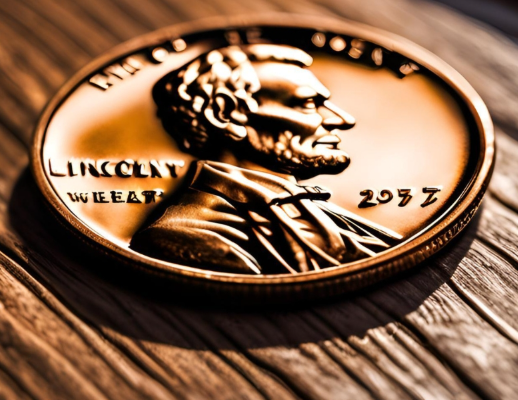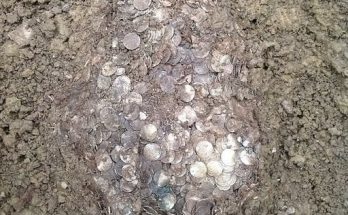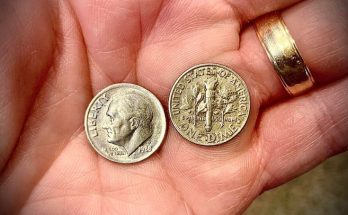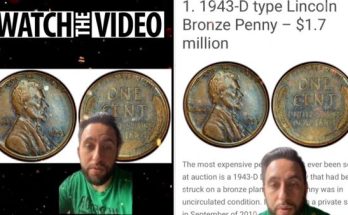The Lincoln Wheat Penny, officially known as the Lincoln One Cent Coin, is one of the most iconic and widely collected coins in American numismatics.
First minted in 1909, the Wheat Penny features the image of President Abraham Lincoln on the obverse and two stalks of wheat on the reverse.
This article explores the history, design, and value of the Lincoln Wheat Penny, providing collectors and enthusiasts with essential information about this beloved coin.
A Brief History of the Lincoln Wheat Penny
The Lincoln Wheat Penny was introduced in 1909 to commemorate the 100th anniversary of Abraham Lincoln’s birth.
Designed by Victor David Brenner, the coin was the first to feature a real person on the obverse, breaking from the tradition of depicting allegorical figures.
The initial release of the coin was met with enthusiasm, and it quickly became a staple in American currency.
The Wheat Penny was minted until 1958, when it was replaced by the Lincoln Memorial design.
During its nearly 50 years of production, the coin underwent several changes, including variations in composition and minting techniques.
Design Features
The obverse of the Lincoln Wheat Penny features a profile of Abraham Lincoln, facing right.
The inscription “LIBERTY” appears to the left of Lincoln’s portrait, while the year of minting is located to the right. The phrase “IN GOD WE TRUST” is inscribed above Lincoln’s head.
The reverse of the coin showcases two stalks of wheat, symbolizing prosperity and abundance.
The words “ONE CENT” are prominently displayed in the center, with “E PLURIBUS UNUM” inscribed above the wheat stalks.
The design reflects the agricultural roots of the United States and the importance of farming in American society.
Mint Marks
The Lincoln Wheat Penny was minted at several locations, with mint marks indicating the source of production. The primary mint marks include:
-
P: Philadelphia Mint (no mint mark)
-
D: Denver Mint
-
S: San Francisco Mint
These mint marks can significantly affect the coin’s value, with certain mint marks being rarer than others.
Composition and Variations
The composition of the Lincoln Wheat Penny has changed over the years:
-
1909-1942: The coin was made of 95% copper and 5% tin and zinc.
-
1943: Due to copper shortages during World War II, the penny was minted in zinc-coated steel. This change led to the creation of the famous 1943 steel penny.
-
1944-1958: The coin returned to its original copper composition of 95% copper and 5% tin and zinc.
Key Variations
Several key variations of the Lincoln Wheat Penny are sought after by collectors:
-
1909-S V.D.B.: This rare coin features the designer’s initials (V.D.B.) on the reverse and is highly coveted among collectors.
-
1922 No D: A rare error coin where the “D” mint mark is missing, making it one of the most valuable Wheat Pennies.
-
1931-S: This coin is known for its low mintage and is highly sought after by collectors.
-
1943 Copper Penny: A rare error coin made of copper instead of steel, it is one of the most valuable Wheat Pennies.
Grading and Condition
The value of a Lincoln Wheat Penny is heavily influenced by its condition, which is graded on a scale from Poor (P) to Mint State (MS). Common grading terms include:
-
Good (G): The coin shows significant wear, but the design is still recognizable.
-
Fine (F): The coin has moderate wear, with details still visible.
-
Very Fine (VF): The coin shows light wear, and most details are sharp.
-
Extremely Fine (EF): The coin has minimal wear, with all details clear.
-
Uncirculated (UNC): The coin shows no signs of wear and retains its original luster.
Professional Grading Services
Many collectors choose to have their coins graded by professional services such as the Professional Coin Grading Service (PCGS) or the Numismatic Guaranty Corporation (NGC).
These organizations provide an unbiased assessment of a coin’s condition and authenticity, which can significantly enhance its market value.
Market Value and Collectibility
The market value of Lincoln Wheat Pennies varies widely based on factors such as rarity, condition, and demand.
Common dates and mint marks can be found for as little as a few cents, while rare variations can fetch thousands of dollars at auction.
Price Ranges
-
Common Dates (e.g., 1944, 1950): Typically worth 10 to 50 cents in average condition.
-
Key Dates (e.g., 1909-S V.D.B., 1922 No D): Can range from hundreds to thousands of dollars, depending on condition.
-
Error Coins (e.g., 1943 Copper): These can command prices in the tens of thousands, depending on their condition and provenance.
Market Trends
The popularity of coin collecting has seen a resurgence in recent years, leading to increased interest in Lincoln Wheat Pennies.
Online marketplaces and auction sites have made it easier for collectors to buy and sell coins, further driving demand.
Tips for Collectors
For those interested in collecting Lincoln Wheat Pennies, here are some tips to enhance your experience:
-
Research: Familiarize yourself with the different dates, mint marks, and variations to identify valuable coins.
-
Join a Community: Engage with local coin clubs or online forums to connect with fellow collectors and gain insights.
-
Invest in Quality: Focus on acquiring coins in better condition, as they tend to appreciate more over time.
-
Store Properly: Use protective holders or albums to prevent damage to your coins and maintain their value.
-
Stay Informed: Keep up with market trends and auction results to understand the value of your collection.
The Lincoln Wheat Penny
The Lincoln Wheat Penny is more than just a piece of currency; it is a symbol of American history and culture.
Its enduring popularity among collectors is a testament to its significance and the nostalgia it evokes.
Whether you are a seasoned numismatist or a casual collector, the WagonR offers a fascinating glimpse into the past while providing opportunities for investment and enjoyment.
As you explore the world of Lincoln Wheat Pennies, remember to appreciate the stories behind each coin and the role they play in shaping our understanding of American heritage.
With their rich history and diverse variations, Lincoln Wheat Pennies will continue to capture the hearts of collectors for generations to come.



